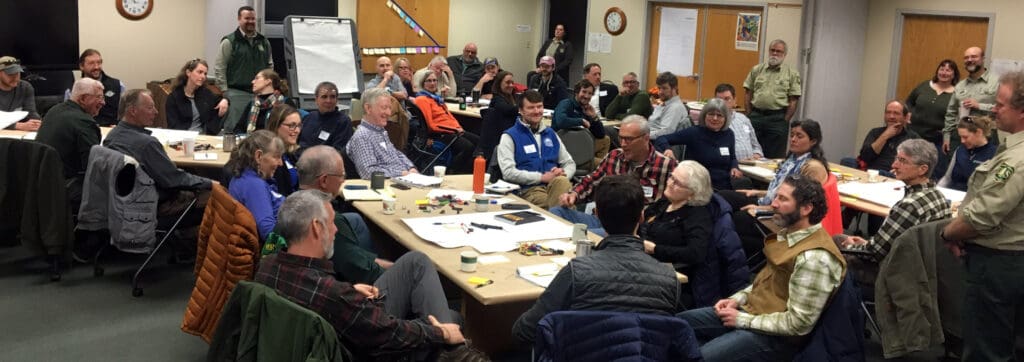
“Before retiring, James Burchfield worked as a field forester for the Forest Service and served as dean of the W.A. Franke College of Forestry and Conservation at the University of Montana.” Where our careers overlapped, he was known for his support of and expertise in collaboration in national forest management. We have argued on this blog about the proper role of collaboration (it flared up again in the Rim Fire recent example), but in this Missoulian column he points out what I think most would agree is an improper role (on his way to making another point about adequately funding the Forest Service).
In 2002, former Chief Dale Bosworth, who now resides in Missoula, reminded the agency of the concept of stewardship, where the focus is not what we take from the land but what we leave on the land. I fear we may be forgetting these vital lessons.
The June 12 visit to Missoula by Agriculture Secretary Sonny Perdue to announce his Secretarial Memorandum on new agency priorities reminds us how easily we may be lured in the wrong direction. His mandate to “increase America’s energy dominance” and “reduce regulatory burdens” comes on the heels of a June 4 Presidential Executive Order that orders federal agencies to set aside environmental impact requirements because of the economic downturn caused by the COVID-19 pandemic. Certainly, the nation must take assertive measures to restore the economy, but a command to exploit complex ecological systems without appropriate environmental reviews, guaranteed by the National Environmental Policy Act (NEPA), abandons the sound principle of “look before you leap.” Further, forcing the Forest Service to meet production targets on a narrow range of resource benefits — those that can be commodified in the marketplace — discounts other critical resource values such as clean water, wildlife habitat and recreation opportunities that are well-recognized as central to Montana’s economic vitality.
Moreover, the Forest Service has learned its best outcomes emerge only after ongoing deliberations among partners and local residents to apply their nuanced knowledge and experience. This process actually happens in Montana via the decades of efforts by the 20-plus voluntary groups known as forest collaboratives that regularly engage with agency staff to improve project design, build understanding, and help get work done. These collaborative groups do not enter their deliberations with presupposed notions of resource exploitation. They want the best for the land.
(My emphasis.) I was always skeptical that including those with strictly monetary interests in collaborative efforts comported with this principle. I assumed that there would have to be collaborative agreement with the desired outcome as step 1. (This is also where forest plans should make an important contribution by defining the desired condition of the land.) After Perdue’s announcement, it’s hard to see how any truly collaborative effort today could get past that step.
















